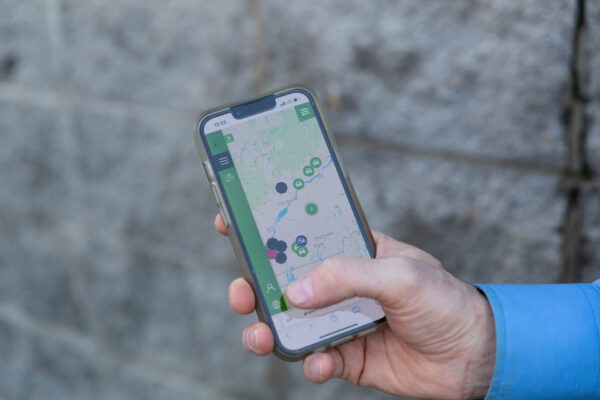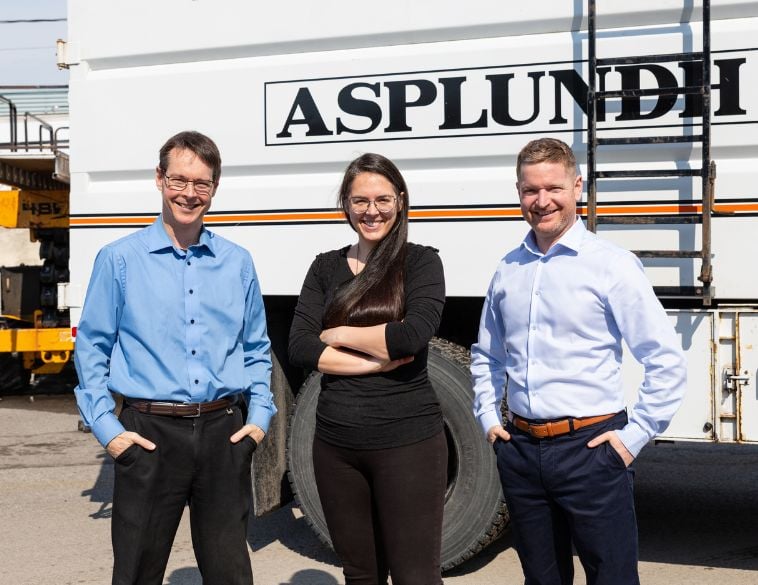At a time when vehicle fleet utilization and optimization has become a major issue for fleet managers, Quebec-based Geothentic offers simple, efficient, and cost-effective solutions.
Launched in 2006 by Guillaume Poudrier, the original mission of the company was to solve an issue that constantly irritated its founder, that of commercial and heavy-duty vehicles whose engines were needlessly idling. As an extension of this initial concern, the company went on to develop and deploy a comprehensive suite of solutions for fleet managers wishing to optimize their operations.
“We wanted to develop simple telematics-based solutions which would benefit fleet managers in virtually any industry,” explains Guillaume Poudrier. “Harnessing data via telematics-based technology is one thing, however, providing fleet operators with accurate, real-time strategic information required for operational decision-making is a whole other ball game. Our vision and focus is to deliver the specific metrics required by fleet managers to achieve their fleet optimization objectives.”
Geothentic has automated many features to make it easier for managers to perform their tasks. For example, they can establish criteria, such as automatically shutting down the engine of a truck or other equipment if it has been unnecessarily idling for 15 minutes, or automatically alerting the driver and notifying the fleet manager when a specific speed limit is reached. “The main thing to remember is that we develop customized solutions for each and every one of our customers,” explains the company president. “We work together with our customers to identify the key targets that they wish to achieve in the area of fleet management. Objectives can range from reducing fuel consumption or ensuring efficient use of the vehicles in their fleet, to the elaboration of the most efficient delivery routes. Furthermore, we can provide them with the necessary data to facilitate the planning of their preventive maintenance programs. In doing so, we are sharing in their success.”
Measuring usage
With the current shortage of vehicles and equipment, more and more fleet managers are being forced to re-assess their current vehicle replacement strategies. Before replacing light-duty or heavier motorized equipment, their usage needs to be assessed. Is it compulsory to replace this unit with an equivalent unit, or could a smaller, more economical vehicle meet the usage criteria? In some cases, underutilized vehicles could simply be removed from the fleet or allocated to other users.
To create a cohesive game plan, you need accurate, objective data. This is another area where Geothentic delivers all the data required by fleet managers to closely monitor the usage of as many vehicles as required. “A fleet of vehicles is a huge expense in any company, which is why it is crucial that this expense be fully optimized,” explains Poudrier. “Our user-friendly data can help determine if the fleet has a suitable number of optimally utilized vehicles. Our data can also help determine when a specific vehicle should be resold, based on its resale value versus depreciation and maintenance costs.”
This data is also valuable for scheduling preventive maintenance. This generates reports and alerts indicating that a vehicle is scheduled to be serviced over the next few days. The service facility can then determine which parts and technicians are needed. This strategy reduces the risk of breakdowns, retain vehicle resale values while ensuring that the units required to maintain the company’s level of service with their customers are available.
Maintenance intervals will be based on kilometres driven or, for heavy equipment, on hours of use.
When it comes to the development of telematics-based technologies, the Geothentic President can count on the technical expertise of his brother Pascal, who serves as Innovation Director. “Customer needs are constantly evolving, so we have to be able to deliver customized solutions, in conjunction with smart communication technology which is also continuously evolving.”

Operating efficiency
Luc Chagnon, of Entreprises Chagnon, which specializes in construction, civil engineering, waterworks, and paving, has had Geothentic as a partner over the last decade. The company has more than 150 vehicles and wanted to monitor the health of its vehicle fleet as well as the best practices of its drivers and equipment operators.
“Our heavy equipment is continually being rotated from one job site to another, geolocation allows us to know where it is at all times,” explains Chagnon. “For example, subcontractors who are responsible for refuelling the equipment need to be able to easily locate it, which is now possible with the Geothentic system. We are also able to plan our preventive maintenance by scheduling it at exactly the right time, not too early and not too late. This is one of the management tools that is particularly useful to our business.”
“The integrated telematics tools also allow us to understand certain real-time situations; whether it’s a delay due to traffic congestion, for example. We know where our equipment is at all times, instantly. As an example of the advanced applications of Geothentic solutions, an alarm will notify the driver if the truck’s dumper isn’t lowered correctly.”
For Chagnon, the data delivered by these systems can be shared by all the relevant decision-makers. “We can make decisions together to achieve our common goals. Fleet management challenges are an important component in our business, the efficiencies we gain with Geothentic offer an excellent return on investment.”
Jean Faucher, Logistics Director at Construction et Pavage Portneuf, concurs. “Access to this strategic data in 2022 is the key to success. These tools allow us to maximize our operations.”
He gives the example of how measuring vehicle usage has positively influenced the behaviour of drivers and operators. “We don’t want to monitor them, but we do want to know where our equipment is and how it is being used. Just a small thing like the system that turns off the engine after a certain period of idling already provides a good return on investment. Then there is the accuracy of the data which has changed our operations for the better. For example, the low bed driver has in his smartphone the exact location where he must pick up a piece of heavy equipment, as well as the best route to get there in time. For us, optimising routes equates with a cost-effective way of doing business.”




